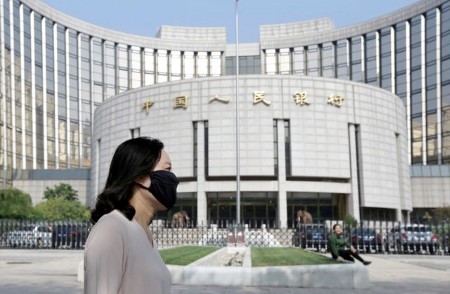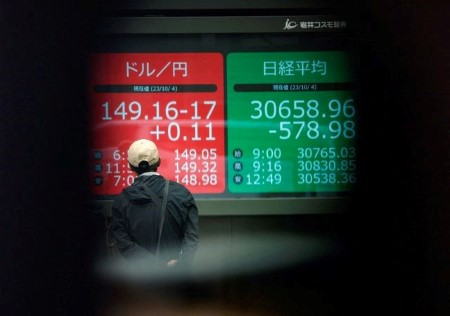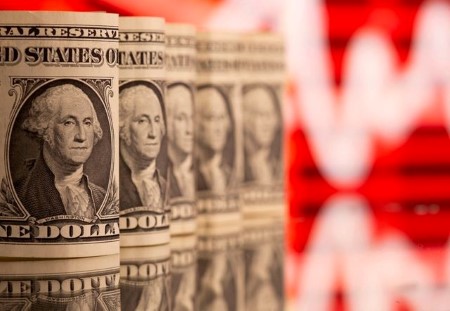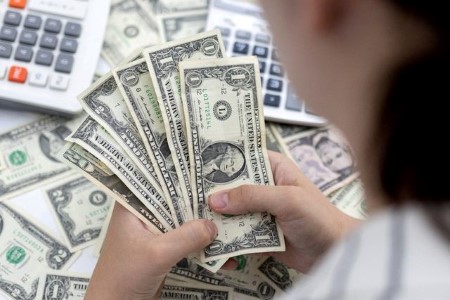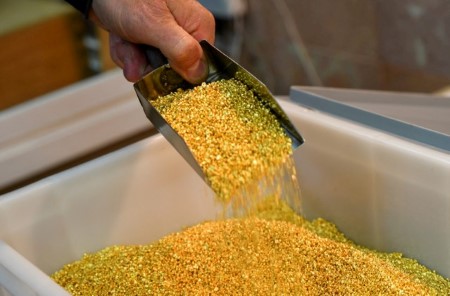SHANGHAI/SINGAPORE, Oct 26 – As China’s government speeds up spending plans to strengthen an economic recovery that has spluttered this year, investors are betting the central bank will help out by easing monetary policy further.
Yuan interest rate swaps CNYIRS moved swiftly lower after the government on Tuesday announced a 1 trillion yuan (USD 136.69 billion) sovereign bond issue and also said provincial governments would be allowed to bring forward borrowings.
The announcement came on the same day that sources told Reuters that President Xi Jinping made his first known visit to the central bank and as the government wealth Fund Central Huijin Investment vowed to keep buying in the stock market.
“We continue to expect more policy support to come,” said Wang Tao, chief China economist at UBS.
Wang expects banks’ reserve requirement ratio (RRR) to be cut to facilitate the upcoming massive government borrowings, along with other monetary and fiscal measures, including a reduction in the policy interest rate.
The People’s Bank of China has cut both the RRR and its main policy rate twice this year.
The one-year medium-term lending facility (MLF) rate, a key policy rate, has been lowered twice by a total of 25 basis points so far this year, to 2.50%.
But borrowing costs in the world’s second-largest economy remain elevated as authorities try to keep monetary conditions stimulative without deviating from a longer-term mission of reducing leverage in the property and municipal sectors while trying to manage a weak yuan.
The interest rate on one-year AAA-rating negotiable certificates of deposit (NCDs), which measure the short-term inter-bank borrowing costs, is at a six-month high of 2.5505%, about 5 basis points higher than the MLF rate the central bank charges financial institutions.
“Cash conditions have been relatively tight for some time, so an RRR cut could replenish the liquidity drained by the new bond issuance as banks will invest in those new bonds,” said a trader at a foreign bank.
“But if market rates continue to go up after the RRR cut, policymakers will have to cut policy rates.”
WAYS TO EASE
Several global investment banks, including J.P.Morgan and Goldman Sachs, forecast a 25-basis-point RRR cut in the fourth quarter of this year.
The sovereign bond issuance approval supported “our call for a 25 bp RRR cut and a 10 bp policy rate cut in Q4,” analysts at Goldman Sachs said.
That expectation led to China’s benchmark 10-year government bond futures CFTZ3 rallying to a two-week high of 101.795 on Thursday. In the derivatives market, one-year interest rate swaps, which show investor expectations of future yields, have fallen 6 basis points this week to 2.03%.
Money markets could face another huge liquidity shortfall in November and December when a large number of MLF loans mature, and the expectation is that the PBOC will replace those funds, even if the excess cash weighs on the yuan exchange rate.
The PBOC has already injected 2.617 trillion yuan (USD 357.60 billion) in short-term cash over the past seven trading days.
PBOC lending via MLF loans is at its highest in more than two years at 5.675 trillion yuan, leading to speculation that it’s easier for the central bank to cut the RRR to replace this funding. Of that, 1.5 trillion yuan matures this year.
“I think the most pessimistic period of funding conditions has passed,” said Zou Wang, investment director at Shanghai Anfang Private Fund Management.
Zou expects easing measures, including an RRR cut to cope with the debt issuance.
Market rates have peaked and all the “bad news” for the bond market, ranging from the government borrowing announcement to quarterly tax payments, has passed, said Su Jiangning, senior product manager at Shanghai Hesheng Assets Management Co.
Ming Ming, chief economist at Citic Securities, also expects a turn in monetary settings will lure investors back into long-term bonds.
(USD 1 = 7.3182 Chinese yuan renminbi)
(Reporting by Winni Zhou and Li Gu in Shanghai, Tom Westbrook in Singapore; Editing by Vidya Ranganathan and Simon Cameron-Moore)







 DOWNLOAD
DOWNLOAD




